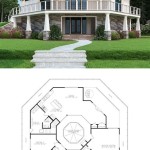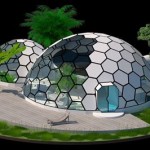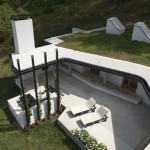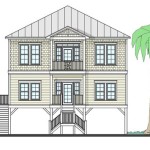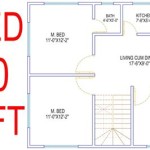Hill house plans are architectural designs specifically tailored to accommodate the unique challenges and opportunities presented by sloped or hilly terrain. These plans often incorporate features such as split-level living, walk-out basements, and elevated decks to maximize space and take advantage of scenic views. One notable example of a hill house plan is Frank Lloyd Wright’s Fallingwater, a renowned masterpiece that showcases the harmonious integration of architecture and nature on a hillside.
By thoughtfully considering the slope and topography of the land, hill house plans enable homeowners to create comfortable and visually appealing living spaces that complement their surroundings. Whether it’s designing a cozy cabin tucked into a hillside or a spacious modern home with expansive views, hill house plans offer a tailored approach to building on elevated terrains.
In this article, we will delve deeper into the key considerations and benefits of hill house plans. We will explore various design strategies, innovative construction techniques, and specific examples that demonstrate the versatility and beauty of these specialized architectural designs.
Hill house plans offer unique advantages and considerations for building on sloped terrains. Here are 9 important points to keep in mind:
- Maximize views and natural light
- Accommodate sloping terrain
- Incorporate split-level living
- Utilize walk-out basements
- Design elevated decks and patios
- Consider drainage and erosion control
- Address foundation and retaining walls
- Enhance privacy and seclusion
- Create unique architectural designs
By carefully addressing these factors, hill house plans can transform challenging terrain into exceptional and visually stunning living environments.
Maximize views and natural light
Hill house plans offer a unique opportunity to maximize views and natural light by strategically placing windows and doors to capture the best vistas and harness daylight. Large windows and expansive glass panels frame stunning views of the surrounding landscape, blurring the boundaries between indoors and outdoors and creating a sense of spaciousness and connection to nature.
Floor-to-ceiling windows and sliding glass doors open up living areas to panoramic views, allowing natural light to flood in and illuminate the interior. Skylights and clerestory windows strategically placed on the roof or upper walls introduce additional daylight, creating bright and airy spaces even in areas that may not have direct access to exterior windows.
Elevated decks and balconies extend the living space outdoors, providing vantage points for enjoying scenic views and soaking up the sun. These outdoor areas become natural extensions of the home, offering a seamless transition between indoor and outdoor living.
By carefully considering the orientation of the house on the slope, architects can design hill house plans that take advantage of passive solar design principles. This approach maximizes natural light and heat gain during the winter months while minimizing heat loss and glare during the summer.
Accommodate sloping terrain
Hill house plans are specifically designed to accommodate the challenges and opportunities presented by sloping terrain. By carefully considering the topography of the land, architects can create homes that are not only visually appealing but also functional and comfortable.
- Terraced design: Sloping terrain can be divided into a series of terraces, or level platforms, connected by stairs or walkways. This approach creates usable outdoor spaces and allows for the house to be built on different levels, maximizing views and natural light.
- Split-level living: Split-level designs divide the house into different levels, with each level offset by a few steps. This allows for a more efficient use of space and can create interesting and dynamic floor plans.
- Walk-out basements: Walk-out basements are partially or fully below grade, with one or more walls exposed to the sloping terrain. This creates a basement level that has direct access to the outdoors, providing additional living space and potential for natural light.
- Foundation and retaining walls: Hill house plans require careful consideration of foundation and retaining walls to ensure stability and prevent erosion. Retaining walls can be used to support the soil on sloping sites and create level areas for building.
By addressing the challenges of sloping terrain, hill house plans offer unique and innovative solutions that embrace the natural contours of the land and create homes that are both practical and beautiful.
Incorporate split-level living
Split-level living is a common design strategy used in hill house plans to accommodate sloping terrain and maximize space. This approach divides the house into different levels, with each level offset by a few steps. Here are some key advantages and considerations for incorporating split-level living in hill house plans:
Efficient use of space: Split-level living allows for a more efficient use of space, especially on sloped lots where traditional single-level designs may be impractical. By dividing the house into different levels, architects can create more usable space without increasing the overall footprint of the home.
Dynamic floor plans: Split-level designs create interesting and dynamic floor plans that can adapt to the unique contours of the land. Different levels can be dedicated to specific functions, such as living areas, bedrooms, and utility spaces, creating a sense of separation and privacy.
Natural flow and connectivity: Split-level living can facilitate a natural flow and connectivity between different areas of the home. By using stairs or ramps to connect the levels, architects can create a seamless transition between spaces, promoting easy movement and interaction.
Improved views and natural light: Split-level designs can take advantage of sloping terrain to provide improved views and natural light. Elevated levels can offer panoramic vistas, while lower levels can be positioned to capture sunlight from different angles.
Utilize walk-out basements
Walk-out basements are a versatile and functional feature in hill house plans, offering a unique opportunity to create additional living space and enhance the connection between indoors and outdoors.
Increased living space: Walk-out basements provide valuable additional living space that can be used for a variety of purposes, such as family rooms, guest bedrooms, home offices, or recreation areas. By extending the living space below grade, homeowners can maximize the usable square footage of their home without significantly increasing the overall footprint.
Natural light and ventilation: Walk-out basements are designed with one or more walls exposed to the sloping terrain, allowing for natural light and ventilation. Large windows and sliding glass doors open up the basement to the outdoors, creating a bright and airy living space that feels connected to the surrounding landscape.
Outdoor access and recreation: Walk-out basements provide direct access to the outdoors, making them ideal for indoor-outdoor living. Patios, decks, or balconies can be incorporated into the design, creating seamless transitions between the interior and exterior spaces. This feature encourages outdoor recreation and allows homeowners to enjoy their sloping property to the fullest.
Enhanced views and privacy: Walk-out basements can be positioned to take advantage of scenic views, offering a unique perspective of the surrounding landscape. The lower level provides a sense of privacy and seclusion, while still maintaining a connection to the outdoors.
Design elevated decks and patios
Elevated decks and patios are essential elements in hill house plans, offering seamless indoor-outdoor living and maximizing the potential of sloping terrain. Here are some key points to consider when designing elevated decks and patios:
- Extend living space and functionality: Elevated decks and patios extend the living space outdoors, creating additional areas for relaxation, dining, and entertainment. They provide a natural transition between the interior and exterior, allowing homeowners to enjoy the outdoors without leaving the comfort of their home.
- Capture scenic views and natural light: By elevating decks and patios, architects can take advantage of panoramic views and natural light. Elevated vantage points offer breathtaking vistas of the surrounding landscape, while large windows and sliding glass doors flood the interior with natural light, creating a bright and inviting atmosphere.
- Enhance outdoor living and recreation: Elevated decks and patios provide a dedicated space for outdoor living and recreation. They can be equipped with comfortable seating, dining areas, and even outdoor kitchens, allowing homeowners to fully enjoy the beauty of their natural surroundings.
- Create privacy and seclusion: Elevated decks and patios can be designed to offer privacy and seclusion, even on sloped lots with limited space. By strategically placing them and incorporating privacy screens or landscaping, homeowners can create outdoor oases that are shielded from view.
Overall, elevated decks and patios are valuable additions to hill house plans, enhancing the connection between indoors and outdoors, providing stunning views, and creating additional living space for relaxation and recreation.
Consider drainage and erosion control
When designing and building hill house plans, careful consideration must be given to drainage and erosion control measures to protect the home and its surroundings from water damage and soil erosion. Here are four key points to address:
- Proper grading and drainage: The land around the house should be graded to direct water away from the foundation and downspouts. Gutters and downspouts should be installed to collect rainwater and channel it to appropriate drainage systems, such as dry wells or storm drains.
- Erosion control measures: Slopes and exposed soil areas should be protected from erosion by using erosion control measures such as retaining walls, terraces, and vegetation. Retaining walls can be used to stabilize slopes and prevent soil from washing away, while terraces can slow down the flow of water and reduce erosion.
- Landscaping: Landscaping can play a vital role in drainage and erosion control. Planting trees, shrubs, and groundcovers on slopes can help to hold the soil in place and reduce runoff. Native plants that are adapted to the local climate and soil conditions are particularly effective.
- Regular maintenance: Drainage and erosion control systems require regular maintenance to ensure they are functioning properly. This includes cleaning gutters and downspouts, inspecting retaining walls for any damage, and replanting vegetation as needed.
By implementing effective drainage and erosion control measures, homeowners can protect their hill house plans from water damage and ensure the long-term stability of the surrounding landscape.
Address foundation and retaining walls
Foundation design for hill house plans must carefully consider the unique challenges posed by sloping terrain. Slopes can exert lateral pressure on the foundation, potentially leading to structural instability. To address this, engineers may opt for reinforced concrete foundations or specialized foundation systems designed to withstand lateral forces. Proper drainage around the foundation is also crucial to prevent water accumulation and subsequent damage.
Retaining walls are essential for stabilizing slopes and preventing soil erosion on hill house plans. These walls are designed to hold back soil and create level areas for building. The choice of retaining wall material depends on factors such as the height and slope of the terrain, as well as aesthetic considerations. Common materials include concrete, stone, and treated timber.
The design and construction of retaining walls require careful attention to drainage. Weep holes or drainage pipes should be incorporated into the wall to allow water to escape and prevent hydrostatic pressure buildup behind the wall. Proper backfill material and compaction techniques are also essential to ensure the stability and longevity of the retaining wall.
Hill house plans often incorporate a combination of foundation and retaining wall systems to address the challenges of sloping terrain. By carefully engineering these elements, architects and engineers can create stable and visually appealing homes that seamlessly integrate with their natural surroundings.
In summary, addressing foundation and retaining walls is critical in hill house plans to ensure structural stability, prevent soil erosion, and create usable and aesthetically pleasing living spaces on sloping terrain.
Enhance privacy and seclusion
Hill house plans offer unique opportunities to enhance privacy and seclusion, making them ideal for homeowners seeking tranquility and a sense of retreat. Sloping terrain and clever design strategies can create natural barriers and visual buffers that shield the home from prying eyes and unwanted intrusions.
One effective way to achieve privacy in hill house plans is to position the home on the lower portion of the slope. This strategic placement allows the natural elevation of the land to act as a barrier, obscuring the home from view from above. Additionally, planting tall trees and shrubs around the perimeter of the property can create a dense green screen that further enhances seclusion.
Another privacy-enhancing design element in hill house plans is the use of courtyards and internal gardens. By enclosing these outdoor spaces with walls or fences, homeowners can create private oases that are shielded from the outside world. Courtyards and internal gardens provide a secluded sanctuary for relaxation, entertainment, and intimate gatherings.
Furthermore, hill house plans can incorporate clever architectural features to maximize privacy. For instance, windows can be strategically placed to minimize visibility from neighboring properties, while balconies and decks can be designed with privacy screens or trellises to create sheltered outdoor spaces. By carefully considering these design elements, architects can create hill house plans that offer a haven of privacy and seclusion amidst the natural beauty of sloping terrain.
In summary, hill house plans offer a range of design strategies to enhance privacy and seclusion. From strategic placement on the slope to the incorporation of courtyards, landscaping, and architectural features, these plans provide homeowners with the opportunity to create private and tranquil living environments that embrace the unique characteristics of their sloping property.
Create unique architectural designs
Hill house plans offer a unique opportunity to create architectural designs that are not only visually striking but also tailored to the specific challenges and opportunities presented by sloping terrain. By embracing the natural contours of the land, architects can design homes that seamlessly integrate with their surroundings and showcase innovative and distinctive architectural styles.
- Terraced Designs:
Terraced designs involve creating a series of level platforms or terraces on the sloping site. These terraces can accommodate different functional areas of the home, such as living spaces, bedrooms, and outdoor living areas. Terraced designs not only enhance the visual appeal of the home but also provide practical solutions for maximizing usable space on sloped lots.
- Split-Level Living:
Split-level designs divide the home into different levels, with each level offset by a few steps. This approach allows for a more efficient use of space and can create interesting and dynamic floor plans. Split-level designs are particularly well-suited for hill house plans, as they can accommodate the natural slope of the land while providing ample living space.
- Cantilevered Structures:
Cantilevered structures extend beyond the supporting walls or columns, creating a dramatic architectural statement. In hill house plans, cantilevered structures can be used to create floating decks, balconies, or even entire rooms that seem to hover over the sloping terrain. This design approach adds a touch of modernity and visual interest to the home while also maximizing views and natural light.
- Courtyard Homes:
Courtyard homes feature an enclosed outdoor space or courtyard that is surrounded by the home’s structure. In hill house plans, courtyards can be designed to take advantage of natural slopes, creating private and sheltered outdoor living areas. Courtyards can also provide additional natural light and ventilation to the interior spaces of the home.
These are just a few examples of the unique architectural designs that can be created with hill house plans. By thoughtfully considering the natural contours of the land, architects can create homes that are both visually stunning and functional, offering a harmonious blend of architecture and nature.










Related Posts


